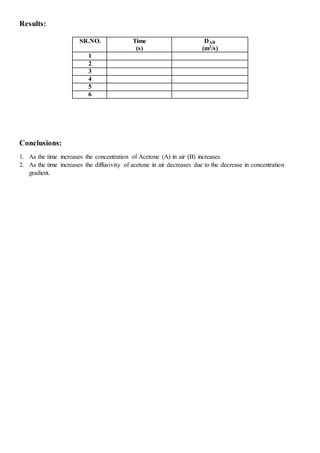1. The document describes an experiment to determine the diffusivity of acetone in air using Winkelmann's method. Acetone is allowed to evaporate from a vertical glass tube while air flows over it. The rate of drop in the acetone level is measured over time.
2. The rate data is used to calculate the diffusivity coefficient of acetone in air using Stefan's correlation. The diffusivity is expected to decrease over time as the concentration gradient decreases.
3. Procedures are provided to measure parameters like temperature, acetone density, air velocity and to record observations of acetone level drop at regular time intervals. The diffusivity is then calculated from the data.







